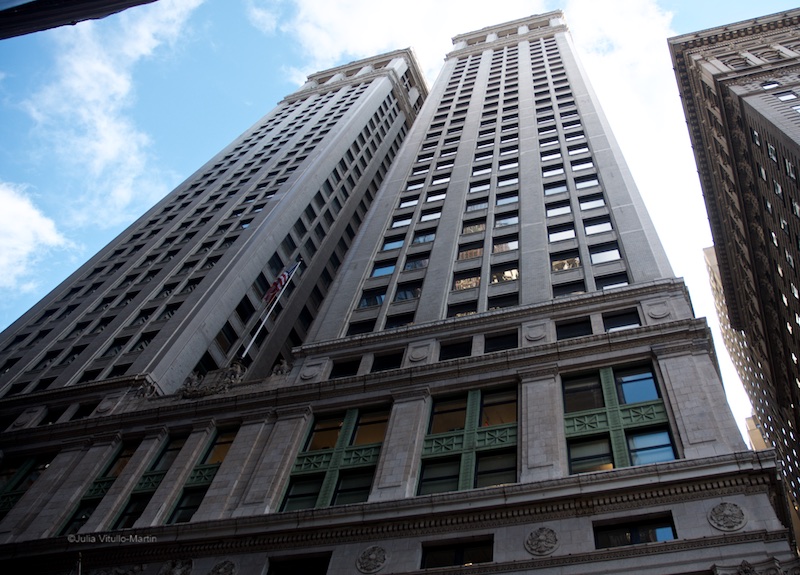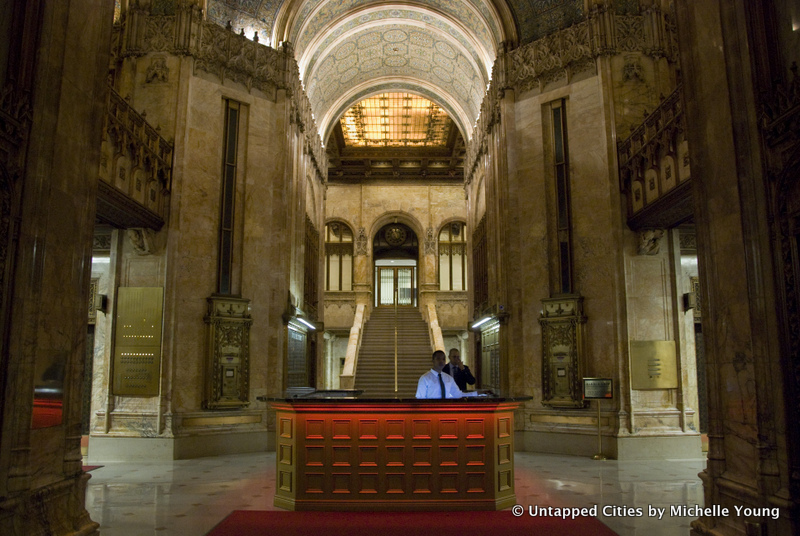14. Shadows of the Past

The Equitable Building (120 Broadway) is a whole lotta skyscraper for such a little space. Its striking, robust form befits its original tenant, the Equitable Life Insurance Society. But many considered it a harbinger of gloom and doom when it was completed in 1915 in the Wild West days of skyscraper construction. As buildings grew taller, residents soon complained that the superstructures cast enormous, dreary shadows along the streets of Lower Manhattan. Due to the controversy surrounding buildings like the Equitable and the Woolworth Building, New York’s crucial Zoning Law of 1916 dictated that buildings be constructed with setbacks, in the “wedding cake style,” as they called it, to help contain shadows and to allow more sun to reach the sidewalks.
 Lobby interior of the Woolworth Building
Lobby interior of the Woolworth Building
Compare the Equitable Building with 28 Liberty Street (formerly One Chase Manhattan Plaza), one block east, the one with the weird white-tree sculpture (called Group of Four Trees). The modern plaza exemplifies the second great zoning change in New York (passed in 1961), which made it easier for skyscrapers to ascend straight up without setbacks when open public spaces were constructed at their bases. (More on that in Chapter 18.) (Pine and Nassau Streets)





